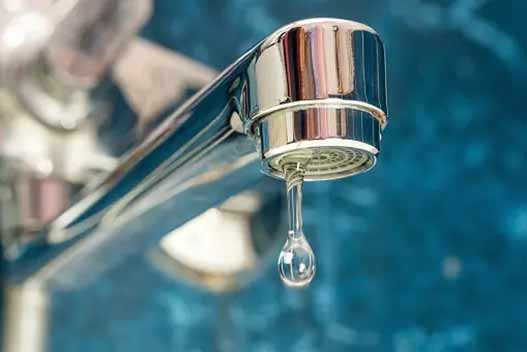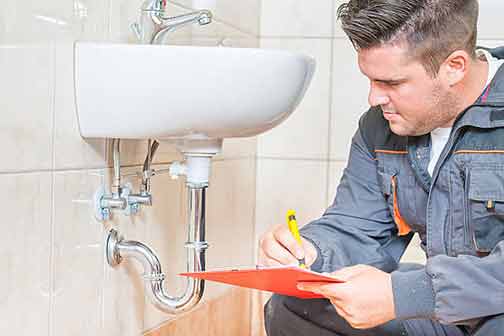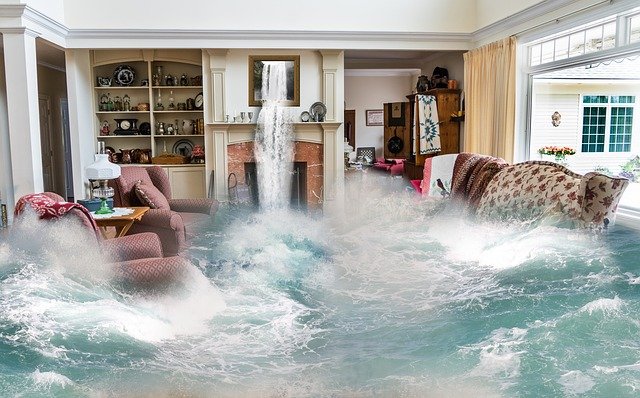The accidental release of water within a home is the leading cause of house damage. Clockwork Property Management warns that once unleashed inside your home, water does not need more than a few minutes to cause damage that can cost you tens of thousands of dollars to fix. That is why it is essential to know what to do if your home is ever flooded by a plumbing leak.
Speed is of supreme importance when dealing with this kind of issue. Ideally, you want to arm yourself with the proper knowledge to deal with the situation before the need arises. Knowing the first step to minimize the problem and being able to take that step can make the difference between a thousand dollars versus ten thousand dollars in repair costs.
8 essential steps to take if your home is flooded by a plumbing leak
Locate the leak
The first thing is to determine where the water leak is coming from. If it is a pipe or plumbing fixture you have access to, stop the water supply by turning off the control valve (if it has one). If the pipe or fixture doesn’t have its shut-off valve, shut the water supply to your home by turning off the main water shut-off valve for the house.
Turn off the power
Turning off the power is unnecessary if there is only a small amount of water on the floor. But if this is a major flood and there is a risk of water getting into outlets and electrical appliances, you will need to turn the power off from the mains. If the electrical panel is in your flooded basement, do not enter the basement to turn off the power; wait for an electrician or call the utility company.
Call your insurance company
You should inform your insurance company as soon as possible. They may want to ask some questions to get more details about the problems, do not answer questions unless you are sure of the answers. What you need from the insurer is information on how to deal with the issue. Your insurer may also have their preferred water restoration professional and mold expert.
Document the damage
Having visual proof of the cause and extent of the damage makes it easier to process your insurance claims. Before you start fixing your home, you want to document the damage. Walk through your home and take pictures of the damage. You may also use a video accompanied by a clear audio commentary accompanying the video. A written record of the damage also helps.
Remove wet items
Actually, as a first step, you should remove your belongings from the path of the water. Do this as soon as you shut down the water supply. It will help to minimize the damage to your home. Subsequently, when you assess and document the damage to the house, you should remove all items that have been partly or fully submerged. Do this for every wet article, whether you think they can be salvaged or should be discarded.
Contact a water restoration expert
If your insurer has their preferred water restoration expert, use that company. It is not easy or even possible to assess the competence of a water restoration expert when you have an emergency on your hands. Finding a water restoration company that has been vetted by other people is a big help in these situations. You may ask family, friends, and neighbors for their recommendations. Hiring a water restoration professional as soon as possible will help reduce restoration costs.
Decide what needs to be restored
You will not be able to restore everything that was damaged by the water. There are some items you should not try to salvage. For instance, if a carpet has been submerged, it is best to discard it. Your flooring and parts of your walls may also need to be replaced. Depending on how wet they are and for how long, furniture and other items in your home may be salvageable.
Hire a mold specialist
One of the aftermaths of having a flood in your home is a high probability of mold. If you can dry out your home within 24 hours of the flood, the chances of mold growing in the house are slimmer. But even if there are no visible signs of mold in your home, you should still call the mold specialist. This is because the higher humidity levels caused by flooding will increase the risk of mold.
To reiterate, speed is essential when dealing with flooding incidents in the home. But the best protection against flooding in your home is to commit the steps discussed in this post to memory. It is also a good idea to find a competent water restoration expert in your area, even if you think you will never have a flooding emergency in your home.







